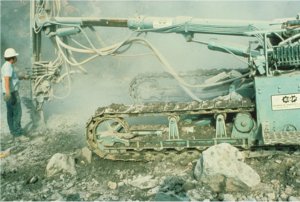OSHA’s beleaguered proposal to reduce silica exposure levels for workers has encountered yet another delay, due to possible public confusion over an error on www.regulations.gov, the federal government's online portal for submitting rulemaking comments.
Because of the website problem, the agency has announced that it is extending the public comment period for the Notice of Proposed Rulemaking on Occupational Exposure to Crystalline Silica for an additional 15 days -- to Feb. 11, 2014.
History of delays
The news will no doubt frustrate worker safety advocates, who’ve been sharply critical over the two+ years it took the White House Office of Budget and Management (OMB) to review the proposal. That delay, which violated an Executive Order requiring reviews to completed in 90 days, was followed up by one in October caused when House Small Business Committee Chairman Sam Graves (R-Mo.) asked OSHA for an extension.
Safety organizations say the proposal is long overdue, while industry groups who oppose it – citing implementation costs and safety and health improvements already in place --may welcome the extension.
How exposure occurs
Workers can be exposed to dangerous levels of silica dust through cutting, drilling, grinding, or otherwise disturbing material that might contain silica, such as during construction, shipbuilding or mining jobs.
Studies have found a strong association between silica exposure and lung cancer, kidney disease and autoimmune system disorders.
OSHA estimates that more than two million workers a year are exposed to to silica dust, and that lowering the permissible exposure level would save 700 lives a year.
Pro and con
“Each day that the federal government stalls, workers are needlessly exposed to dangerous levels of silica dust, which is one of the oldest known causes of work-related lung disease,” said Tom O’Connor, executive director of the National Council for Occupational Safety and Health.
However, Rep. Graves said in a statement last week that the additional time is a good thing.
“Because this rule could create new standards and requirements for small businesses in construction, manufacturing, and many other industries, significant input from the small business community is needed so the final rule is one that increases safety and is technologically and economically feasible.”
How to comment
To submit comments using www.regulations.gov, stakeholders may click on the "COMMENT NOW!" box next to the title "Occupational Exposure to Crystalline Silica; Extension of Comment Period" and follow the instructions on-line for making electronic submissions.
Public hearings on the proposed rule are scheduled to begin on March 18, 2014. Information on the proposed rule is available at www.osha.gov/silica.

